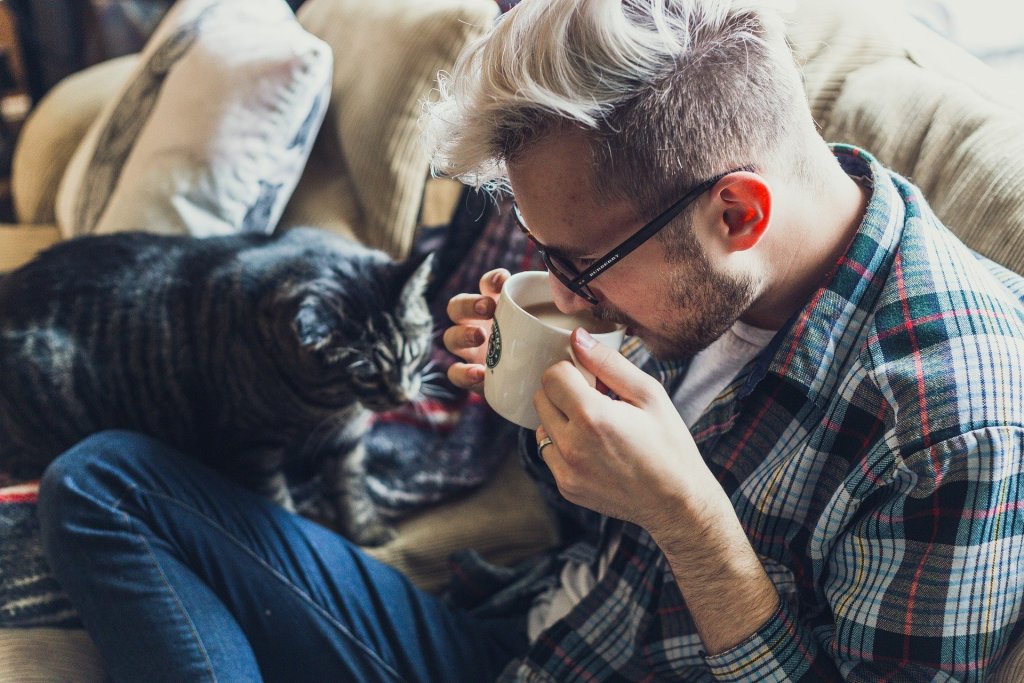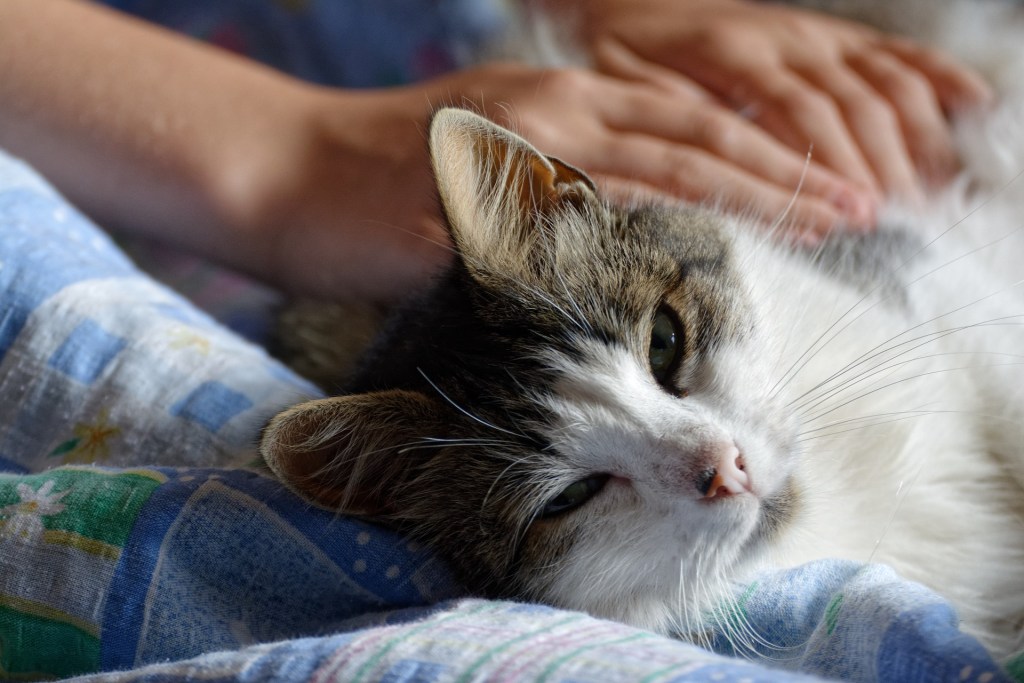One of the joys of having a cat in your home is being able to relax with him on the couch, petting him as he sits beside you. But not all cats are excited to be petted when they first meet their humans, and it can take some time before a cat becomes comfortable with the concept. Your cat will need to learn to trust you, and if he doesn’t, he might feel defensive and could scratch or bite at you to protect himself. Understanding how to pet a cat correctly can help keep you safe, and it will increase the chances of your cat learning to enjoy the attention.

Set yourself up for success
First, pick the right time to pet your cat. Certain times of the day, like when your cat is eating or when he’s playful and running around the house, aren’t ideal for a petting session. If your cat is sleeping, don’t disturb him, which can surprise him and make him mad. Instead, choose times when your cat is relaxed and feeling affectionate. Did your cat just jump up onto the couch to sit next to you? That’s the perfect time to give him some attention.
Petting your cat after he’s finished eating can be helpful, too. After a meal, your cat’s next inclination will be to sit down, bathe himself, and probably take a nap. That calmer demeanor may prepare your cat to accept some petting as he relaxes.
When petting your cat, let him be the one in control. Put your hand down as he walks by your legs to see if he’d like some attention. Sit on the couch next to him and, if he moves away from you, respect that. Pet your cat while he’s free to leave, rather than when you’re holding him in your lap or otherwise restricting his movement.
Pet the right areas
Make sure that you’re familiar with how to pet a cat and which areas you should focus on. Many cats love to have the base of their ears, their chin, and their cheeks stroked. Other areas tend to be more off-limits — the tail, stomach, and your cat’s paws are definite spots to avoid.
Pay attention to how you’re petting your cat, too. Cats develop particular preferences. While the occasional cat might appreciate a vigorous scratch under the chin, most cats will be happier with gentle, slow strokes. Experiment with different amounts of pressure and petting tempos to see if you can figure out what your cat likes best.
As you pet your cat, watch for feedback. Many cats will start to run their heads against your hand or angle their heads so you can better scratch their chins. Purring can be another encouraging sign.

Watch your cat’s body language
Carefully watch your cat’s body language, since he’ll give you feedback and let you know if he’s getting uncomfortable. If your cat suddenly stares at you or otherwise tenses his body and stops responding to your petting, it’s time to back off and let him alone for a while.
Your cat may signal in other ways that he needs a break. He might move away from you or stop leaning into your hand, and he might stop purring. He might flatten his ears or shake his head, and could lick his nose, too. Your cat might also start to groom himself quickly for a few seconds or crouch in an attempt to get away from your hand.
In these cases, respect your cat’s wishes and give him some time alone. Some cats are more social than others, and you’ll get to know your cat’s preferences and habits. The more patient you can be with your kitty, the better your chances that he’ll accept you and even look forward to petting in the future.
Petting a cat the right way means you need to be focused and aware of your cat’s boundaries and comfort level. If your cat is new to your home, it can take some time before you gain his trust. Be sure your kitty is fully vaccinated, particularly for rabies, before you start handling him and interacting with him. While careful attention to your cat’s body language may help you avoid being swatted, it’s a good idea to keep your cat’s nails trimmed short, just in case. If your cat should bite you, it’s important to seek medical attention, since cat bites can easily get infected. Hopefully, that’s not something you have to worry about, and your cat learns to welcome having you pet him.


